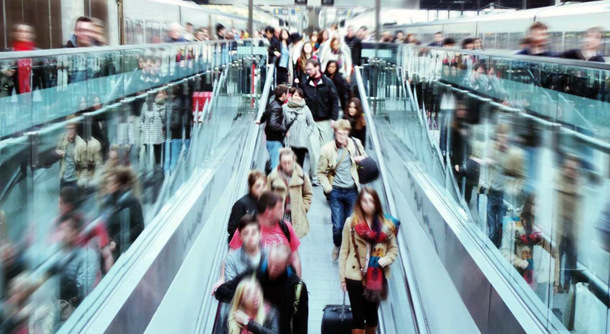Veovo helps airports implement social distancing
- May 28, 2020
- William Payne

A virtual queuing and passenger density management system from UK firm Veovo can support social distancing in airports.
With Covid-19 lockdowns beginning to ease, the pace at which flying restrictions will be lifted is likely to be heavily influenced by airports’ ability to implement physical distancing measures. To support these requirements, Veovo has released technology designed to monitor crowd density and maintain safe distancing airport-wide.
It uses movement monitoring and machine learning to offer real-time and predictive passenger density and movement insights, for better live situational awareness and future planning.
The virtual queuing technology lets travellers pre-book a time slot for processing at airport checkpoints, rather than having to wait in a queue. Airports can control queue entry, preventing too many people from congregating in one area and evenly distributing passengers across the airport’s checkpoints. Available time slots are adjusted in real time, based on queue wait times, changing arrival patterns and processing capacity so passengers show up at the optimum time.
Passenger density management technology monitors crowd density in queues and spaces across the terminal, enabling airports to take action if social distancing limits are at risk of being breached.
This bundles location analysis from various IoT sensors, with machine learning and an alert framework, to give a detailed view of how people move and dwell. From typical crowding zones such as check-in and security to areas such as gates and concessions, it continuously monitors and analyses movement to highlight the degree of risk in real time.
Live heatmaps and dashboards show operators a reliable breakdown of the current situation, triggering tailored alarms and automated actions if density thresholds based on current guidelines – say one or two metres – are exceeded.
Recommendations to limit crowding can include capping entry to busy escalators or stairwells, adjusting security lane openings, changing call-to-gate times, updating digital signage, or distributing gate and baggage belt allocations.
With these people movement insights, operators can also improve the responsiveness of sanitation service providers, directing teams to where cleaning is most needed.
Besides real-time insights, the platform also includes predictive capabilities that not only help operators manage crowding in real time but also plan for days, weeks and months ahead. It offers detailed insights into people’s movement habits, and how factors such as time of day or day of the week, or other events, affect passenger behaviour.
“Having worked with busy international airports globally in smoothing passenger journeys, we understand the enormous challenge the industry currently faces in supporting physical distancing,” said James Williamson, CEO of Veovo. “To safely manage crowding, operators need accurate, timely data. By accommodating new social distancing needs, we enable safe and proactive planning to reduce crowds and to make sanitation and disinfection programmes more effective.”
The technology is said to be quick to deploy, allowing airports to support social distancing recommendations rapidly. It can provide detailed insights within weeks while allowing operators to continue adapting to increase safety and efficiency.
“With Veovo, we can proactively manage passenger flow and respond promptly and efficiently to irregular operations and disruptions,” said Olivia Pierre, general manager at Queenstown Airport in New Zealand.





